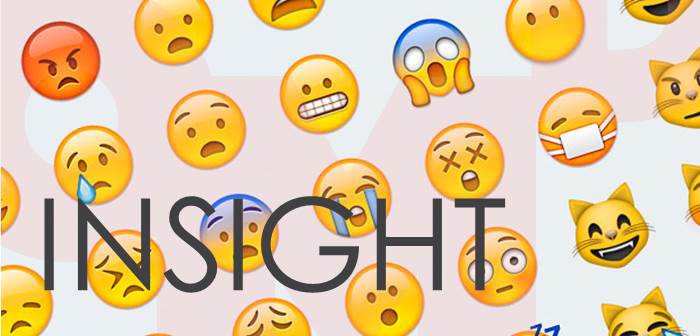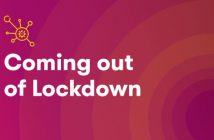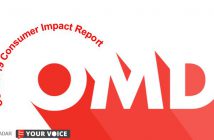We recently had a discussion about the rise of emoticons, aka emojis… saying that none of us are able to write a text message anymore without dropping at least one of those cheeky little icons in.
There is some history to this sort of pictoral representation of language. The early Chinese and Egyptians used hieroglyphics to communicate, and some schools of thought lean towards the idea that we are now evolving backwards to re-adopt this sort of communication.
With our research hats on, we could not resist testing the difference between the use of emojis and words, when trying to understand how Brits feel about certain brands.
In our experiment, we selected ten brands from different categories and split our Your Voice community into two groups at random. One group was asked to verbally explain with one word or phrase how they feel about the brand, whereas the other group was given a beautiful selection of different emoji faces, cats, hearts, (and yes, the poo icon, but nobody selected that!)…followed up by a question to explain their choice of emoticon.
The differences in results are impressive.
People can find it difficult at times to describe in words how they feel and what they think about brands and responses when asked and the answers are usually simpler and less defined, with little depth.
Here are some example responses from the test group that wasn’t given emoticons and was asked to express their feelings in words.
The question we asked: Please tell us in one word or phrase how you feel about the company shown:
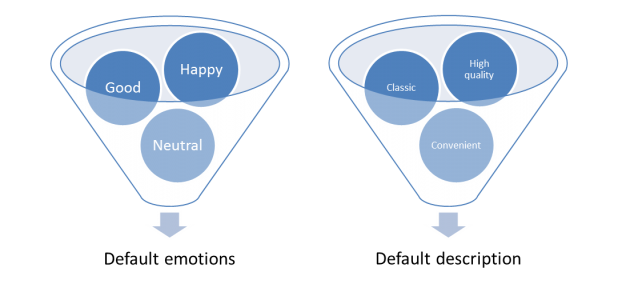
The answers of this group felt like default responses – generic feelings or descriptions that respondents feel they are expected to say about a certain brand. What we also found was that respondents would describe the brand and how they see it, rather than just focusing on how they feel. Again, a default reaction and, as interesting, a rambled justification.
When compared to the emoji group, we found that the use of emoticons are great as a first step of emotional expression, which seem to remove the barrier of not being able to formulate or pin down a certain emotion. They provide the less articulate amongst us with a prompt, a guidance but no judgement. They can even express complicated emotions when joined together to form an emoji sentence.
The question we asked: Please put the pin on the appropriate emoji, which is closest to how you feel about the company shown:
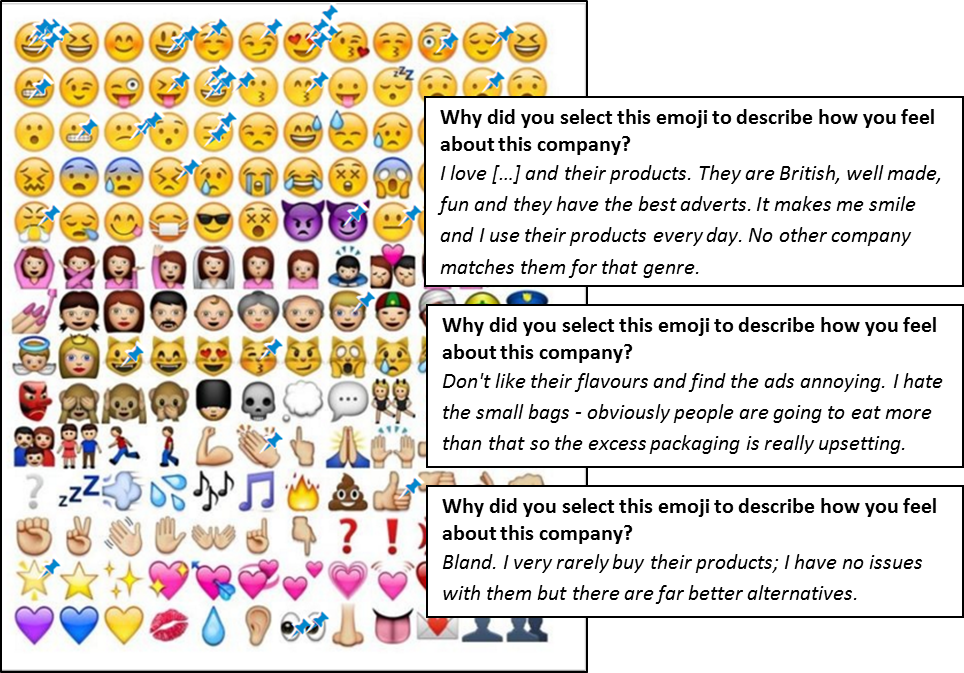
Let’s take this one step further, researchers have found that emojis go some way in satisfying our human need to express ourselves, in a simple heuristic way. They make it effortless for someone to convert a particular emotion into words. This is particularly true for 18-25 year olds: research by TalkTalk found that 72% of 18-25 year olds find it easier to express their emotions if they are using emoticons and nearly half of them say that using emoticons in digital communication enables them to express themselves more effectively.
We understand emojis to be emotional communication, hence our response would be more of a gut-reaction, as it is easier for our brains to process compared to having to think of an emotive verb. The emoticon spectrum does help respondents to communicate a more dynamic bandwidth of how we feel about a certain brand.
So what?
Do emojis represent the future of human communication? Who knows, but understanding consumers’ moods is a hot topic these days. Some brands are already on board, with McDonald’s, Dominos and Ikea already embracing this new pictoral approach in their above the line comms.
For us, the gap really exists in marketing research and insight. Rather than just assuming that ‘happy = good’, we need to start seeing the value in the full spectrum that human emotions can offer, especially when considering that there are currently around 1,200 different emoticons available. There are social listening tools that provide us with emoji wordclouds, but how else can we harness the rich insights that are currently lurking amongst the billions of uses of these little pictures every single day?
By Denise Funke and Frances Revel
